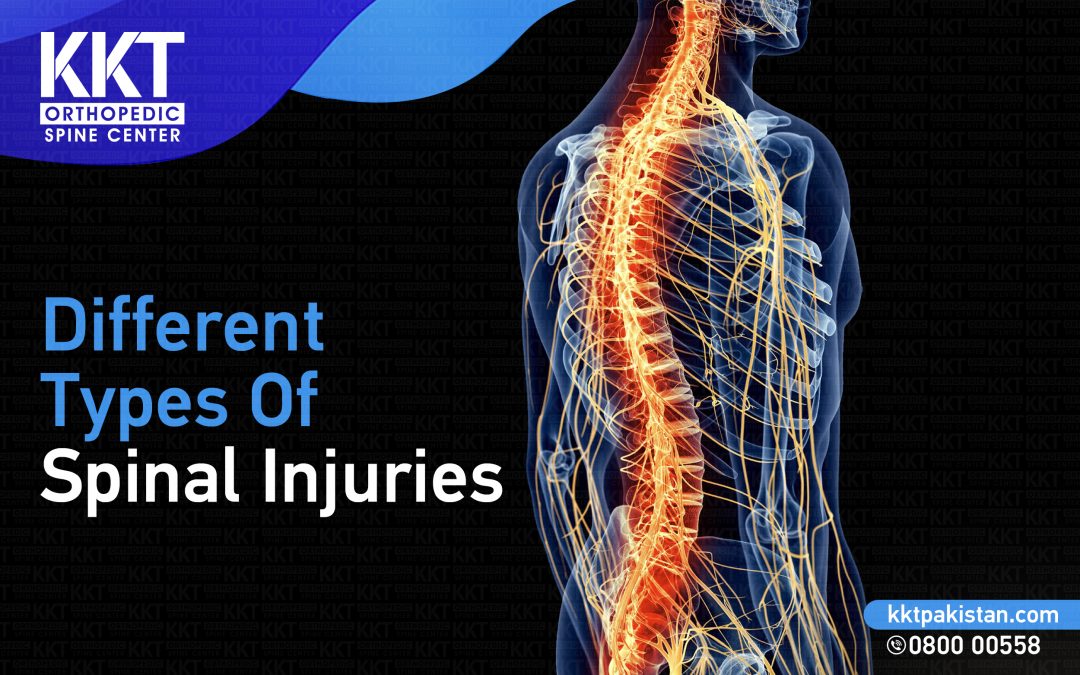The purpose of the spinal cord is to transmit messages from the brain to the rest of the body. If the nerves get damaged after a spinal injury, one may lose several vital bodily functions. Therefore, it is crucial to comprehend how they differ and what symptoms are related to each level of spinal injury because there are many forms of these injuries.
They are categorized as:
- External trauma is the most frequent cause of spinal injury, but there are also other reasons “non-traumatic” causes of spinal cord injury.
- Internal trauma causes include tumors, blood loss, and stenosis. Nearly, half of those who suffer from spinal injuries are between the ages of 16 and 30.
The term “incomplete spinal injury” describes partial spinal cord damage. The location of the spine affected and the severity of the injury determines how much movement and feeling are possible. Results are determined by the health and medical background of the patient. You will get to know spinal injury types in this blog.
What are the most severe types of spinal cord injury?
The spinal cord’s cervical, thoracic, lumbar, and sacral segments all affect the severity of spinal cord injury. Basically, a different collection of nerves that govern the body is protected by each part of the spine. Therefore, depending on the area of the spine that is injured, there are different types and degrees of spinal cord injuries. The following are spinal injury types:
Cervical Injury
The cervical portion of the spine comprises seven vertebrae (C-1 to C-7) in the neck. It is closer to the brain so, any damage in the cervical can cause severe injury and affect a larger portion of the body. If there is any injury in the cervical area, it causes limited or absence of feeling or movement below the shoulder/neck.
Thoracic Spinal Injury
Fractures of Thoracic and lumbar spine fractures are the result of high-energy trauma;
- Car or motorcycle collision
- Fall from a significant height
- Sports accident
- Violent acts, such as gunshot wound
Spinal fractures may also be caused by bone insufficiency. For example, people with osteoporosis, tumors, or other underlying conditions that weaken the bone can fracture a vertebra even during lower-impact events — such as falling from a standing height or twisting. These fractures may develop unnoticed over some time, with no symptoms or discomfort until a bone breaks.
Lumbar Spinal Injury
The lumbar spine comprises the lowest major portion of the spinal cord. However, it carries the most weight of any of the sections of the spine and therefore, features larger vertebrae than the thoracic and cervical sections of the spine.
Injuries to the spinal cord in the five lumbar vertebrae (L-1 through L-5) generally result in some loss of function in the hips and legs but do not affect the functionality of the upper body.
KKT Treatment
KKT treatment offers the most sophisticated and highly effective non-invasive medical technology for spinal restoration.
Our treatment has been proven to reduce or eliminate pain by re-aligning spinal vertebras back to their normal symmetrical positions. Our spinal care restores the body’s structural and neurological balance that has been affected by disturbances from the spine. This restoration reactivates the transmission of healing messages from the brain to the affected part of the body and vice versa. As a result, your own body’s rhythms and natural healing processes can begin.

